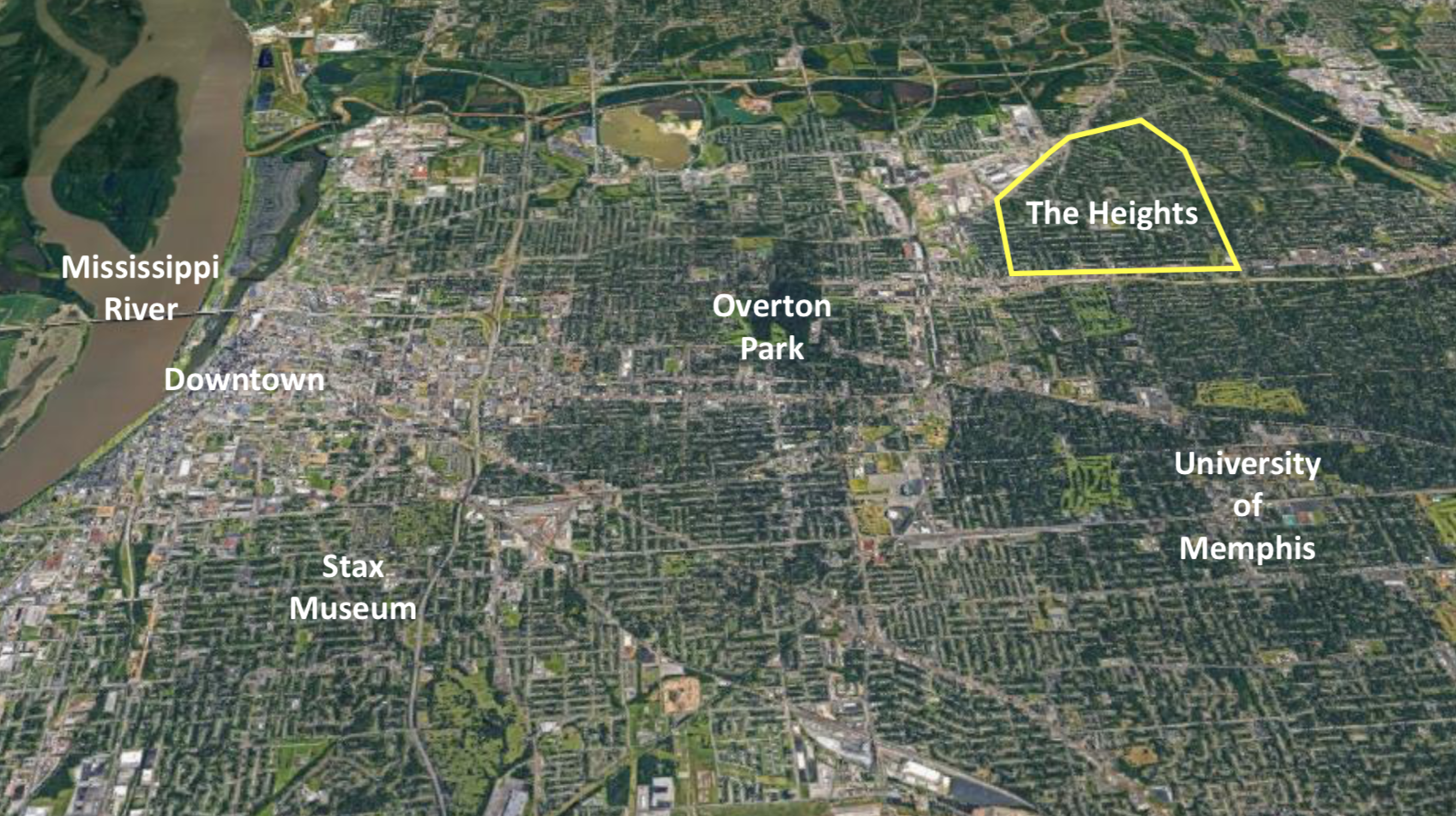Our Neighborhood
Heights Community Development Corporation
The Heights CDC builds community through just housing redevelopment and a commitment to serve with and learn from our neighbors. This non-profit was incubated by Binghampton Development Corporation and serves the neighborhoods north of Summer Ave.
Although its primary focus is on rehabbing blighted properties, the Heights CDC seeks to revitalize the community by building relationships with residents, supporting community leaders, and creating shared green spaces. The creation of shared green spaces act as catalysts for civic engagement and promote residential and economic development. Prior to the Heights Line, the Heights CDC has lead in the creation of a community walking trail, neighborhood mural, basketball court, and three community gardens.
History of Highland Heights Neighborhood
In the 1830s, the Heights neighborhood was due east of Memphis and largely controlled by the Pope Cotton Plantation. In the late 1880s, Shelby County acquired the western side of Holmes Road (Lamphier and neighboring streets) for the Shelby County poor farm, work house, and insane asylum. Today you can see these small identical buildings, now private homes, in the northwest section of census track 13. In 1905, the Raleigh Street Car Line fostered development of bedroom communities for those who worked in Memphis. The street car line ran along Broad Avenue from Memphis to Binghampton, turned north along National Street, and continued east after crossing the Wolf River. Access to public transportation sparked commercial and retail development along Summer, National, Highland and Macon. The neighborhood between these primary arteries was called Highland Heights.

